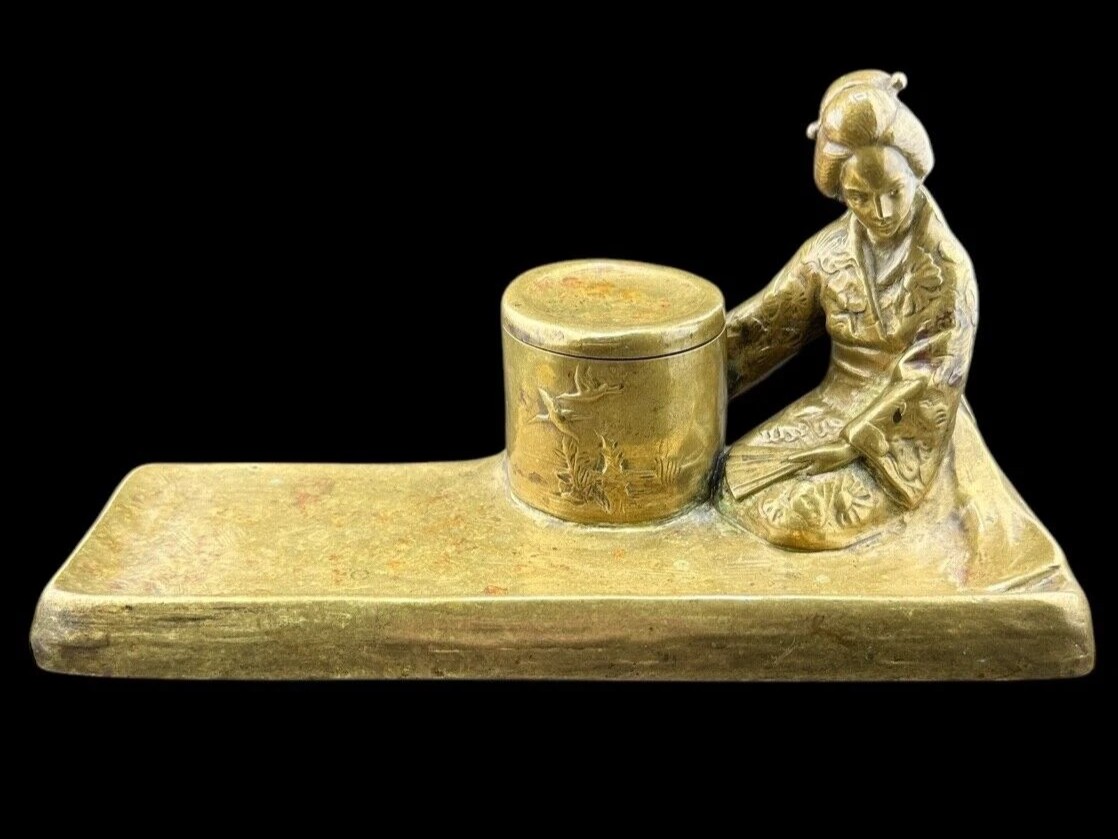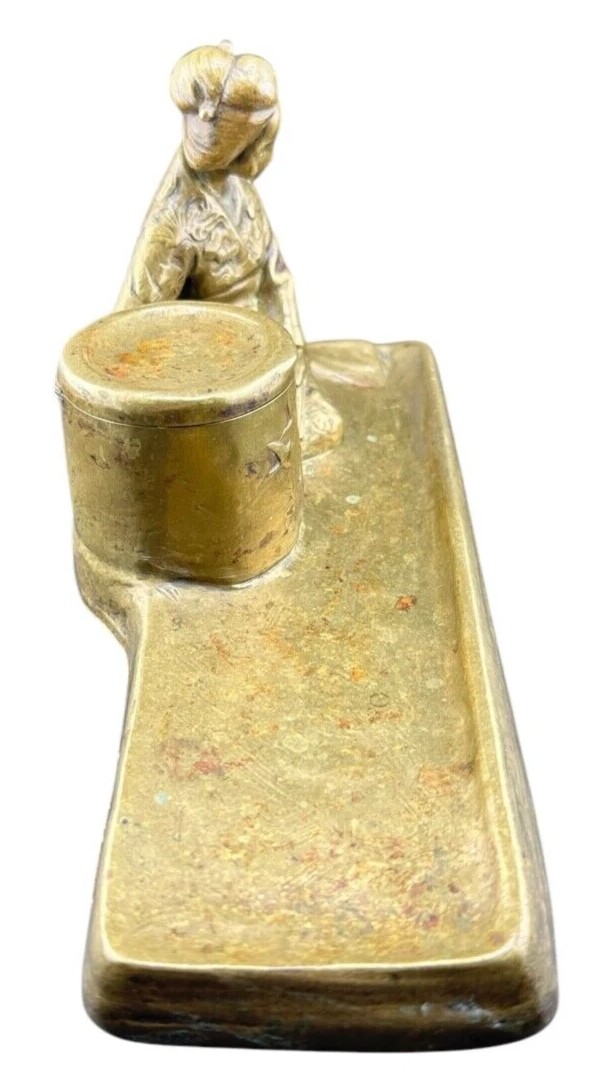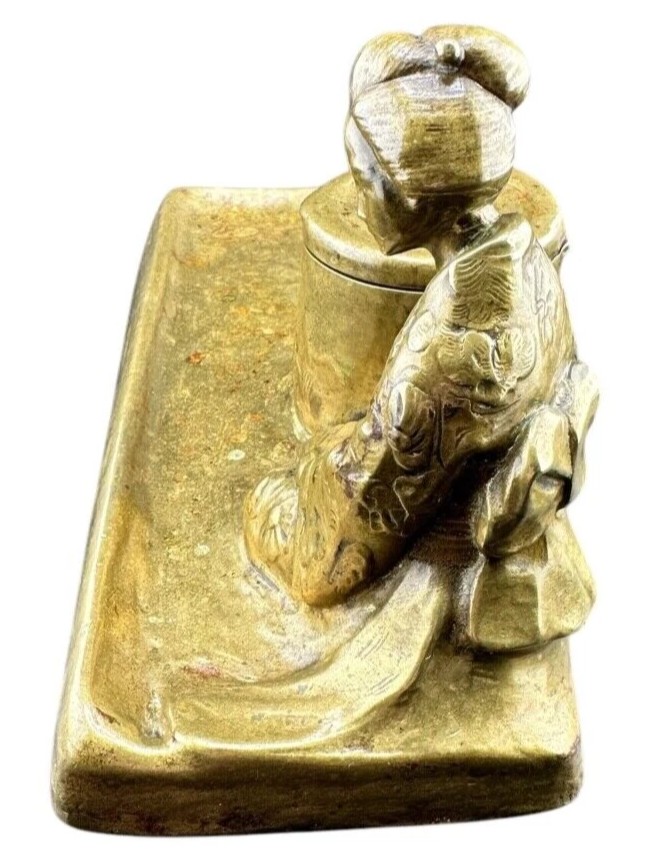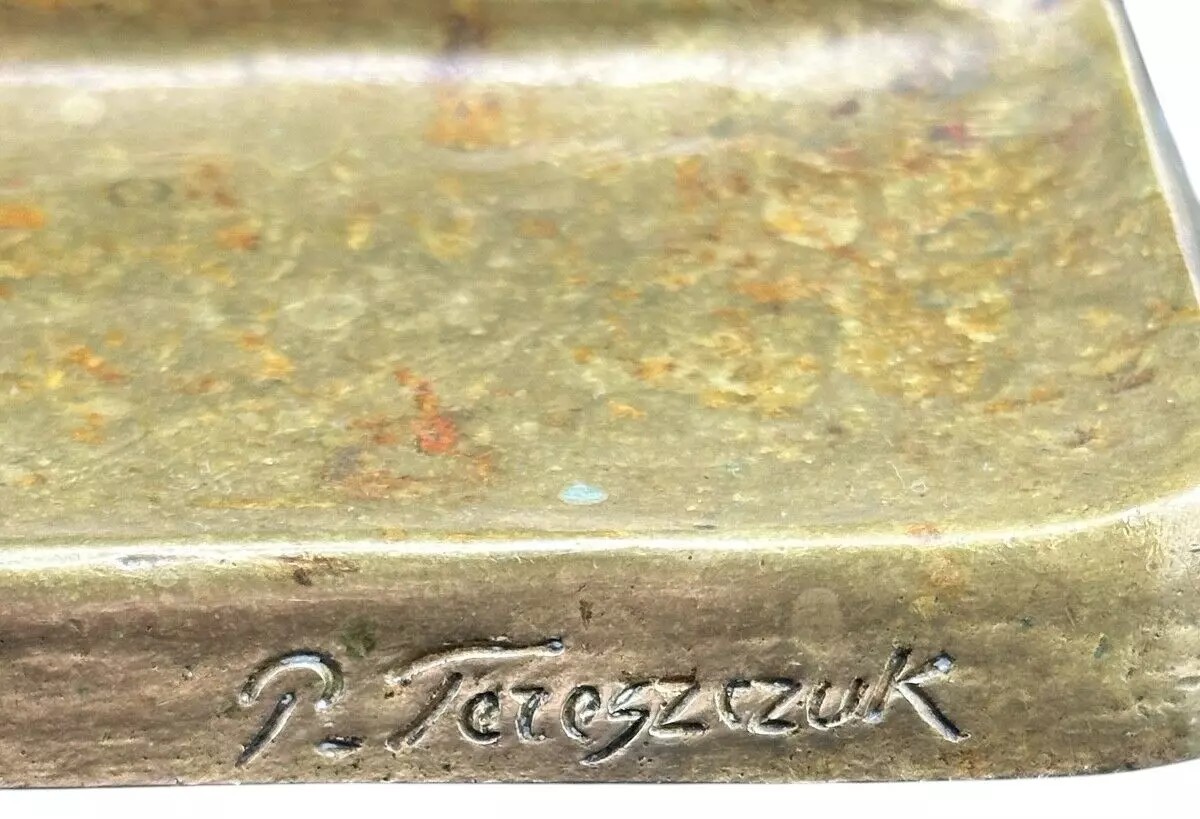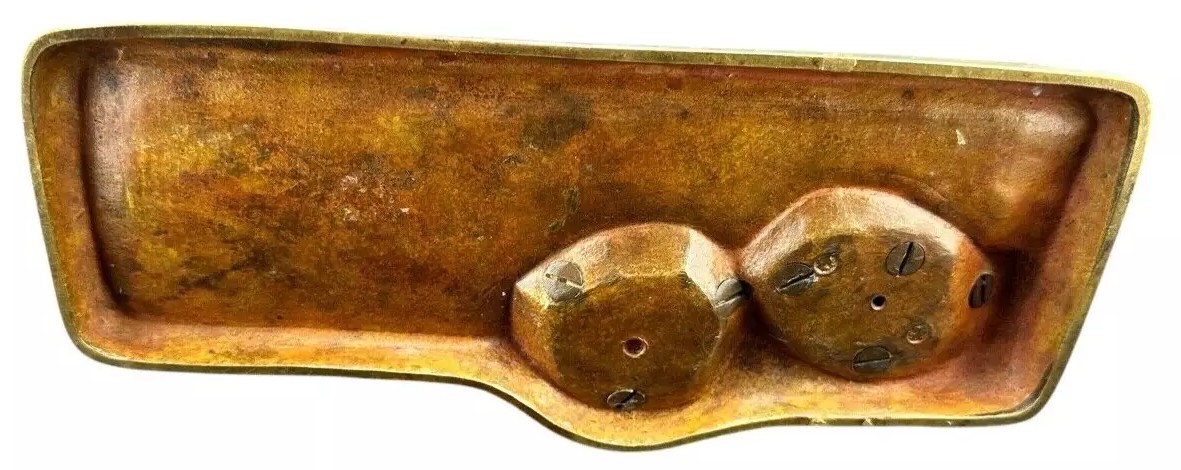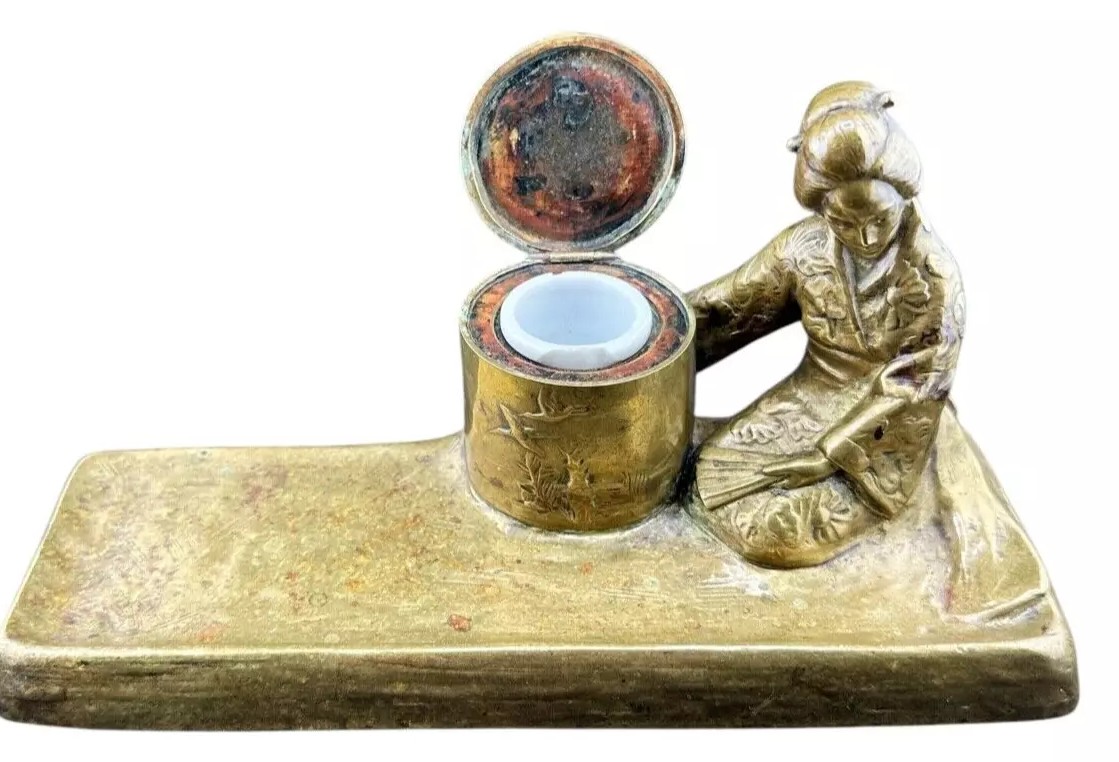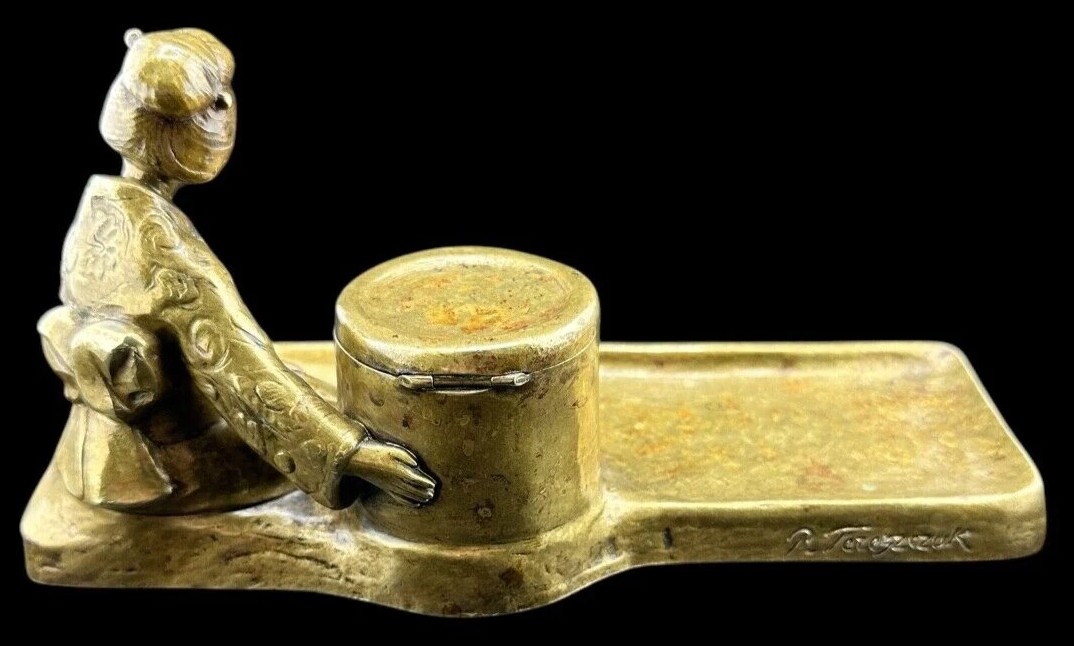
Japanese Geisha
| Categories | Far East / Oriental |
| Material | Bronze |
| Markings | See Narrative |
| Manufacturer | Peter Tereszczuk |
| Origin | Austria |
| Date or Era | circa 1920 |
| Measuring | 9” x 3 ¾” x 4 ¼” high |
This bronze inkstand depicting a Japanese geisha is signed by the sculptor Peter Tereszczuk.
Description:
The inkwell, crafted from bronze, rests on a rectangular base, which serves as a pen tray. The central element is a sculpted figure of a Japanese geisha. She is depicted kneeling, holding a fan in her left hand. Her attire is detailed, showing the folds and patterns of her kimono. Her hair is styled in a traditional Japanese updo, complete with decorative hairpins or combs. Her facial features are delicate and serene.
Attached to the base, next to the geisha figure, is a cylindrical inkpot with a fitted lid. The inkpot is also made of bronze and is decorated with etched or relief details, depicting Japanese motifs such as cranes, bamboo, or other symbolic elements.
Signature:
The inkwell is signed “P. Tereszczuk”.
Peter Tereszczuk (1875-1963):
Peter Tereszczuk was a prominent Austrian sculptor known for his elegant and often whimsical bronze figures, lamps, and other decorative objects, particularly those with Art Nouveau and Orientalist influences. Here are some key points about him:
- Life and Career: Born in Kolomea (now part of Ukraine) in 1875, Tereszczuk studied at the Academy of Fine Arts in Vienna. He established himself as a successful sculptor in the late 19th and early 20th centuries, working primarily in bronze. He died in Vienna in 1963.
- Artistic Style: Tereszczuk’s work is characterized by its grace, attention to detail, and often a sense of narrative or charm. He frequently depicted female figures, dancers, children, and subjects with an exotic or historical flair, including Orientalist themes that were popular during his time. His style often incorporates elements of Art Nouveau in its flowing lines and decorative details, though his career spanned beyond that period.
- Orientalist Influence: Like many artists of his era, Tereszczuk was drawn to Orientalist themes, depicting scenes and figures from the Middle East and East Asia. This inkwell of a Japanese geisha is a clear example of this interest. His Orientalist works often showcase detailed costumes, graceful poses, and an idealized vision of these cultures.
Sold for $505 in March 2025
Content disclaimer. The information posted is the owner’s best knowledge and may not have been vetted by the SOIC. We welcome comments, corrections, and additions, working to make our website information comprehensive and accurate.
Join the Society of Inkwell Collectors (SOIC) – it’s free!
Founded in 1981 as a non-profit organization,
we are documenting inkwells (and accessories).
We’re here to help and inform!
